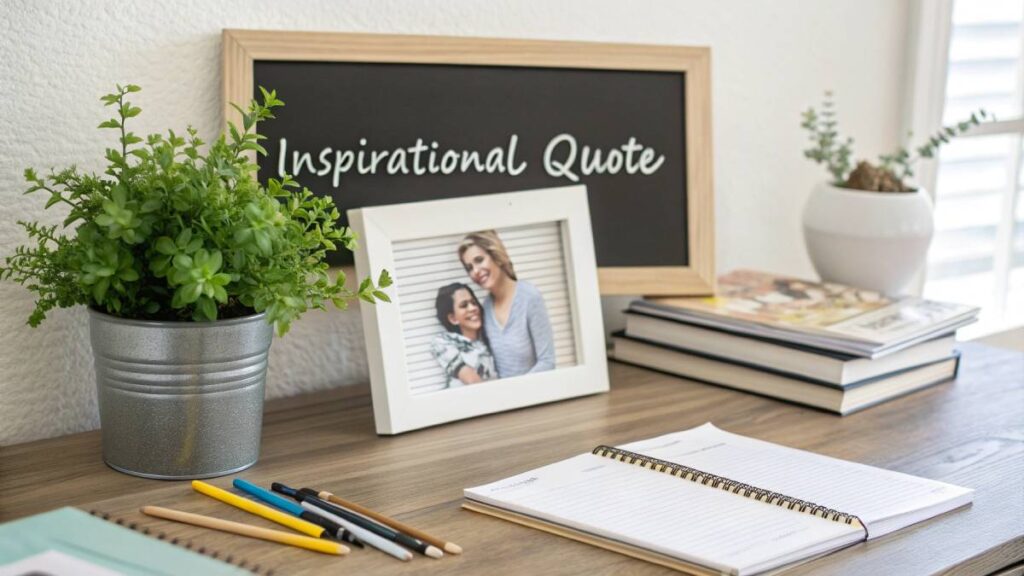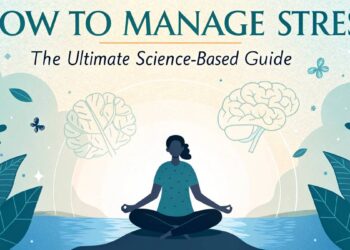Feeling a bit on edge every Monday morning—or most weekdays, for that matter? You’re not alone. Workplace anxiety is more common than many realize, subtly wreaking havoc on focus, energy, and even sleep. It’s like carrying an invisible weight around the office, draining productivity. From racing hearts to rising tensions, the signs are all there—but tackling them doesn’t have to feel insurmountable. Understanding the triggers and embracing strategies to manage anxiety can transform your workday from dreadful to dynamic. Let’s dive into spotting the signs, addressing the triggers, and building a less stressful and more balanced 9-to-5 life.
Key Takeaways
- Recognizing Signs of Workplace Anxiety: Symptoms manifest physically (e.g., exhaustion, tension) and mentally (e.g., difficulty focusing, stress).
- Common Triggers: Overload, lack of control, unclear roles, workplace drama, and job insecurity often fuel anxiety.
- Effects on Health and Well-being: Anxiety negatively impacts physical, mental, and emotional health, potentially leading to burnout and diminished productivity.
- Anxiety-Busting Strategies: Mindfulness, breathing exercises, physical activity, healthy boundaries, and self-care practices can provide relief.
- Work Environment Improvements: Open communication, regular check-ins, and employee resources can ease workplace anxiety.
- Seeking Professional Support: Therapy, counseling, or Employee Assistance Programs are vital for building a personalized care plan.
- Creating An Anxiety-Friendly Workspace: Organization, personalization, and incorporating calming practices can help ease workplace stress.
Understanding Workplace Anxiety
Feeling jittery at work is more common than you’d think. Tons of folks experience it, and it can really mess with your day. Having a handle on the sneaky signs and pesky triggers can help you cut that anxiety down to size.

Recognizing Signs of Workplace Anxiety
Spotting the tell-tale signs of stress at work is step numero uno in wrangling it. People show stress in weird ways – both body and mind might be shouting, “I’m stressed!”
“Awareness is the first step toward change. Recognizing stress patterns helps us disrupt them.”—Dr. Peter M. Senge
Here’s some stuff to keep an eye on:
- Bodily Signs:
- Your heart doing the cha-cha
- Sweating like a sauna session
- Head pounding like a jackhammer
- Feeling zonked out
- Muscles tight like a cramped sardine can
- Mental and Emotional Signs:
- Feeling like you woke up on the wrong side of the bed… every day
- Ready to jump out of your skin
- Brain’s on vacation, can’t focus
- “Oh no, oh no, oh no, oh no no no…” constantly playing in your head
- Swamped and can’t catch a break
Getting a heads-up on these clues means you can start tackling things head-on. Wanna dive into methods to tackle these? Check out anxiety management techniques or stop those pesky anxiety attacks.

Common Triggers in the Workplace
Let’s talk about what makes your work anxiety tick. Figuring out what sets it off can give you the power to kick it to the curb.
| Trigger | What’s the Deal? |
|---|---|
| Work Avalanche | Drowning in tasks with impossible deadlines. |
| Zero Control | No say in what goes on. |
| Job On Shaky Ground | Worried about a pink slip showing up. |
| Juggling Act Flop | Trying to balance work and life? Yeah, right. |
| Drama with Buddies or Boss | Clash of the coworkers. |
| Foggy Job Role | What on earth am I supposed to do again? |
Knowing these hot-button issues can help you put together an anxiety-busting game plan – like anxiety reducing routines or nifty management techniques.
Spotting the signals and figuring out what’s throwing you off can really turn things around at work. Simple strategies, like breathing exercises for anxiety, getting in some exercise, or eating like you mean it with good nutrition, can put you back on track. If you’re in the mood for something a bit offbeat, give herbal supplements for anxiety or weighted blankets, and even meditation cushions a try too.
Importance of Addressing Workplace Anxiety
Workplace anxiety is like that unwelcome guest who never quite knows when to leave, and it hits hard, messing with mental health and messing in on our general happiness. Getting a handle on it is like finding the secret recipe for a more relaxed, productive place to work. When folks and the powers-that-be tune into how anxiety affects us, they’re more likely to cook up smart anxiety-tackling plans.

Impact on Mental Health
Anxiety at work can be a sneaky thief, quietly filching away peace of mind, leaving behind a trail of stress and worry. When anxiety settles in, you might end up with:
- Stress levels on overdrive and constant exhaustion
- A head that’s fuzzy and can’t focus, making simple decisions feel like rocket science
- Emotions that flip at the drop of a hat
- Knocked-down confidence
Recent brainy types have found a link between high workplace anxiety and a rise in nasty conditions like depression and generalized anxiety disorder (GAD). Spotting these early is key and nudging towards helpful anxiety management techniques is even better.
| Mental Health Effect | Likelihood Increase (%) |
|---|---|
| Super-Stressed | 25% |
| Depression | 20% |
| Generalized Anxiety Disorder (GAD) | 30% |
| Less Brain Power | 15% |
Impact on Overall Well-being
Anxiety likes to spread its wings, making life harder in more ways than one, not just in the headspace department but all over. What you might notice:
- Physical Health: Anxiety can manifest itself through headaches, muscles turning into rock-hard knots, tummy troubles, and getting sick easier.
- Social Life: Feeling anxious might make chit-chat with co-workers, bosses, and everyone else about as comfortable as a cactus smoothie.
- Emotional Health: Ride anxiety’s train long enough, and you’ll end up at the stations called burnout and frustration, wondering where your job satisfaction went.
It’s a no-brainer that if you address workplace anxiety head-on, life just feels better. Offices can step up by dishing out employee help resources, offering fun stress-busting classes, and nudging mindfulness or breathing exercises for anxiety into the workday.
Check out ways to craft a happier, healthier office vibe and learn how to help someone with anxiety to sprinkle some kindness and understanding around the workspace. Building open lines to talk things through and having a safety net of support can make handling work jitters way more doable.

Effective Anxiety Management Strategies
Dealing with workplace anxiety is like piecing together a puzzle unique to each person. Here’s a mixed bag of proven methods that can help tame those anxiety gremlins at work.
“Mindfulness is accessible to everyone and builds inner resilience even in the most chaotic circumstances.”—Jon Kabat-Zinn
Mindfulness and Meditation
Mindfulness and meditation aren’t just for yogis anymore. When it comes to quelling workplace anxiety, they’re like Hedy Lamarr to modern inventors: a game-changer. By tuning into the here and now and sharpening awareness, folks can ease stress and beef up their mental wellness.
Regular mindfulness practice makes handling workplace headaches feel less like, well, a headache. Try guided meditations or deep breaths that make you feel each toe. Some offices even carve out space for a little peace and quiet or offer zen sessions.
Need some tips to throw mindfulness into the daily grind? Swing by our write-up on anxiety-reducing routine.
Breathing Exercises
Breathing is free, which is great because breathing exercises can cool anxiety jets fast. Deep breaths help mellow out the nervous system—a bit like a cosmic reboot for your brainwaves.
Get a load of these stress-busting breath techniques:
- 4-7-8 Breathing: Breathe in like you’re taking in a fresh pie smell for 4 seconds, hold it (pretend you’re savoring it) for 7 seconds, then let it out in a super chill whoosh for 8 seconds.
- Box Breathing: Inhale for 4 seconds, pause the breath like a photo op, exhale for 4 seconds, and hold it again—repeat till you drop the stress.
These moves can be pulled off just about anywhere, like when you’re eyeballing that terrifying to-do list. Hunt down our step-by-step on breathing exercises for anxiety for more.
Physical Activity
Moving your body isn’t just good for the glutes; it’s a winner for managing workplace worries too. Exercise lowers stress demons by shooing them off with endorphins, those awesome mood-booster chemicals.
Engage in however much you can, even a jaunt down the block during lunch can lift spirits. Here’s your menu:
- Walking or Jogging: Strut or stride ‘round the block for an easy mood bump.
- Yoga: Unites body and breath, stretching stress away.
- Strength Training: Punches tension in the face, overall good vibes ensue.
For more on pumping up your mental strength, don’t miss our piece on exercise for anxiety.
| Activity | Minutes | Times a Week |
|---|---|---|
| Walking/Jogging | 20 – 30 | 3 – 5 |
| Yoga | 30 – 60 | 2 – 3 |
| Strength Training | 30 – 45 | 2 – 4 |
Mix these practices into your life and watch workplace nerves back down. Craving more strategies? Dive into our full guide on anxiety management techniques.
Promoting a Healthy Workplace Environment
Crafting a chill workplace is key to tackling anxiety at work. Here’s some good stuff that helps build a mellow, supportive space.

Open Communication Channels
When folks feel they can chat openly with the boss, work anxiety goes down like yesterday’s lunch. Having a setting where everyone can lay their thoughts on the table without worrying builds up trust and keeps the air clear. Little check-ins and letting people pop by to talk anytime really do the trick.
- Regular Check-Ins: Consistent one-on-one catch-ups help workers feel appreciated.
- Anonymous Feedback: Secret surveys or suggestion boxes get more honest feedback flowing.
- Inclusive Decisions: Letting employees get in on decisions makes them feel in control, cutting down their nerves.
Encouraging Breaks and Time Off
Telling folks to hit pause and book those vacation days is a must for lowering stress. Breaks hit the reset button, keeping burnout at bay and boosting how much gets done.
- Regular Pauses: Making sure short breaks are baked into the daily grind wards off fatigue.
- Vacation Awareness: Reminding staff to use their PTO helps them unwind and recharge.
- Flexible Scheduling: Giving more leeway with work hours helps folks juggle life and lowers stress levels.
Providing Support Resources
Offering mental health resources is crucial for managing work stress. Easy access to professional help or self-care ideas can really juice up an employee’s well-being.
- Employee Assistance Programs (EAPs): EAPs provide private counseling and support for staff grappling with life’s curveballs.
- Workshops and Training: Classes on anxiety-busting tips show workers how to knock out stress.
- Mental Health Days: Giving days off specifically for mental health helps folks recharge properly.
Check out these ideas wrapped up:
| Strategy | What’s It About |
|---|---|
| Open Communication | Frequent check-ins, anonymous input, and team-involved decisions |
| Encourage Breaks | Regular pauses, reminding vacations, adaptable work hours |
| Support Resources | EAPs, anxiety workshops, days for mental health |
These strategies are all about making work easier on the mind, easing anxiety. For more ideas, peep at tips like breathing exercises and journaling thoughts.
Needing Some Pro Backup
When handling job-place jitters, getting some pro help can be a life-saver. The right kind of help can give you a clear game plan and the support you need to tackle anxiety head-on.
Therapy and Counseling Choices
Therapy and counseling have got your back when it comes to beating anxiety. Talking to a good therapist can help you figure out how to deal with all those worrisome thoughts. You’ve got your Cognitive Behavioral Therapy (CBT) changing the way your brain spins those negative tales, and mindfulness therapy keeping you rooted right in the now.
| Therapy Type | What It Does |
|---|---|
| Cognitive Behavioral Therapy (CBT) | Switches up negative thought habits |
| Mindfulness-Based Therapy | Keeps you grounded in the now |
| Psychodynamic Therapy | Digs into old stories and buried feelings |
| Exposure Therapy | Slowly gets you comfy with the stuff that scares you |
Feel like knowing more on this? Check out our piece on ways to treat anxiety.
Employee Assistance Programs
Lots of jobs offer Employee Assistance Programs (EAPs) to have your back when things get rough. These programs give you a hush-hush helping hand, hook you up with the right mental health folks, and offer a toolkit for de-stressing and keeping anxiety at bay.
| EAP Perks | What It Provides |
|---|---|
| Private Counseling | Secret sessions for sorting personal stuff |
| Mental Health Connections | Links to the right shrinks and counselors |
| Stress-Relief and Chill Resources | Handy hacks and aids for dodging stress faces |
EAPs are gold for anyone in need of a quick pick-me-up, and they’re all about keeping the office vibe healthy and productive. Want to create a zen workplace? Dive into our related article here.
Jumping into therapy or Employee Aid Programs gives you the tools to tackle job anxiety like a champ. By trying out these pro resources, you’ll score better ways to cope and boost your mental mojo.
Self-Care Practices
Looking for a way to chill out at work without hiding under your desk? Try adding some self-care to your daily grind. Let’s chat about making better lifestyle decisions, knowing when to say “no,” and keeping a positive vibe.
Healthy Lifestyle Choices
Feeling jittery? Take a peek at what you’re munching on, how often you’re moving, and how well you’re catching Z’s. A good mix of these can keep your nerves in check.
| Lifestyle Aspect | Recommended Practice | Benefits |
|---|---|---|
| Nutrition | Load up on fruits, veggies, and whole grains | Keeps your blood sugar steady and fuels your body right |
| Exercise | Get moving for at least a half-hour a day | Kicks off those endorphins, your natural “feel-good” chemicals |
| Sleep | Aim for 7-9 hours each night | Boosts your mood and sharpens your mind |
| Hydration | Chug about 8 glasses of water daily | Keeps your energy up and stress down |
Curious about how food feeds your mood? Check out our bit on nutrition for anxiety.
Setting Boundaries
Let’s be real, folks—sometimes you gotta draw the line. Whether it’s with your job, your pals, or even yourself, knowing your limits is key.
- Work Boundaries: Set your work clock and stick to it. Emails? They can wait. Don’t forget those breaks, too!
- Personal Boundaries: Tell your loved ones what you need. Stress city? Politely decline extra plans.
- Self-Expectations: Be gentle with yourself. Perfection is a myth. Life’s hiccups? They happen.
For a crash course on setting solid boundaries, dive into our piece on anxiety management techniques.
Practicing Gratitude and Positivity
Want to turn that frown upside down? Start by seeing the silver lining. Keep tabs on what’s good and watch the magic happen.
| Practice | Description | Benefits |
|---|---|---|
| Gratitude Journal | Jot down three things you’re thankful for daily | Keeps your mind on the sunny side of life |
| Positive Affirmations | Repeat uplifting mantras to yourself | Boosts your confidence and bounce-back ability |
| Reflecting on Positive Experiences | In those quiet moments, recall what went right today | Strengthens positive mental habits |
Need some sunshine in your routine? Visit our article on journaling for anxiety.
By getting on track with a healthy lifestyle, knowing when to stand your ground, and keeping gratitude front and center, you’ll craft a self-care routine that’s tougher than your workweek anxiety. For more tips and tricks, wander over to our content on an anxiety reducing routine.
Creating a Chill Workspace
Got the workplace blues? Transform that desk of doom into a zen oasis—no incense needed. Sprinkle some personality, unclutter the chaos, and sprinkle relaxation magic to keep your anxiety at bay while you muster up productivity.
Quick Clean-Up
A little tidying does the soul good. Here’s how to fight the desk clutter fight:
- Toss the Junk: Your desk ain’t a black hole, so dump the unnecessary stuff.
- Box It Up: Use drawers, boxes, or baskets to stash your paper, pens, and that collection of paper clips—Marie Kondo style.
- Order Your Chaos: Scribble a to-do list daily, because remember: Rome wasn’t built in a day, but it also didn’t have a list.
| Clean-Up Tip | Perk |
|---|---|
| Toss the Junk | Less mess, less stress |
| Box It Up | Everything in its place |
| Order Your Chaos | Stay on top of things |
Make it Yours, Baby
Add a dash of ‘you’ to your workspace to create a cozy nook:
- Pics That Please: Show off your favorite faces (or furry pal’s mug) to spark joy.
- Go Green: Tiny plants do wonders; they’re air-fresheners with swag.
- Deck it Out: Splash some color with stationery, wise words, or a snug blanket.
Soothe Your Soul
Turn your workspace into a peace-promoting powerhouse. Keep the anxiety monsters away with these ideas:
- Just Breathe: Deep breaths, my friend. Simple yet effective. Need tips? Check our breathing exercises for anxiety.
- Find Your Zen: Spend a few quiet minutes in meditation. A cozy cushion can help—learn more here.
- Stay Fidgety: Keep some fun stress-busters like fidget toys around—begin your collection there.
All it takes is a mix of tidiness, personal touches, and a few cool tricks to turn that workspace into your happy place. With these tips under your belt, you’ll be managing those work jitters like a pro. Want more wisdom? Check out our guides on anxiety management and starting an easy-breezy routine.
Tips for Workplace Anxiety Management
- Take regular breaks: Step away from your desk to recharge.
- Practice breathing techniques whenever overwhelmed.
- Build a morning self-care routine for a relaxed start.
- Setup an organized and personally customized workplace.
- Proactively communicate challenges with your manager.
Conclusion
Navigating workplace anxiety can feel overwhelming, but armed with the right strategies and understanding, overcoming it is entirely possible. By identifying the signs—be they physical, emotional, or mental—you can address anxiety head-on before it spirals. Recognizing common triggers, like an unclear job role or mounting workplace demands, empowers you to take control of your environment. Through effective management strategies such as mindfulness, breathing exercises, and regular physical activity, you can combat anxiety while improving overall well-being. Additionally, prioritizing self-care, setting clear boundaries, and creating a personalized, calming workspace can significantly reduce stress.
The role of workplaces in fostering mental health cannot be ignored. Open communication, employee support systems, and a supportive environment pave the way for reduced anxiety across the board. And when things get tough, taking the initiative to seek professional help, like therapy or Employee Assistance Programs, is a sign of strength—not weakness. With the right tools and mindset, you can reclaim peace and productivity at work.
FAQs
What are common signs of workplace anxiety?
Common signs include physical symptoms like fatigue, muscle tension, sweating, and headaches, as well as mental signs such as trouble focusing, irritability, and constant worry.
What triggers workplace anxiety the most?
Common triggers include excessive workloads, lack of role clarity, workplace conflicts, lack of control over tasks, and job security concerns.
How does workplace anxiety affect daily life?
It impacts physical health (headaches, exhaustion), mental clarity (brain fog), social interactions, and emotional resilience, often leading to burnout or dissatisfaction.
Can mindfulness really help reduce anxiety at work?
Yes! Mindfulness practices, like meditation and breathing exercises, help you stay focused and reduce the impact of stressors immediately and over time.
When is it time to seek professional help for workplace anxiety?
If anxiety significantly interferes with your ability to work or affects overall well-being, explore therapy options such as CBT, mindfulness counseling, or Employee Assistance Programs.
Resources
- American Psychological Association: Workplace Stress Management
- Mindful.org: Breathing Exercises for Anxiety
- BetterHealth.gov: Therapy Techniques
Final Thoughts
Workplace anxiety doesn’t have to rule your life. Recognizing its triggers and understanding its subtle signs are your first steps toward regaining balance. Whether it’s conquering an avalanche of deadlines or navigating a tense office dynamic, tools like mindfulness, healthy boundaries, or even professional support can bridge the gap to calmness. Transforming workplace stress requires more than quick fixes—it’s about creating a nurturing environment where open communication and self-care are celebrated. By incorporating these practices, you’ll not only improve productivity but also find yourself enjoying the process, one deep breath at a time.
Recommended Products
- Meditation Cushion for Office
- Weighted Blanket
- Mindfulness Journal
- Tabletop Air-Purifying Plant
- Noise-Cancelling Headphones








